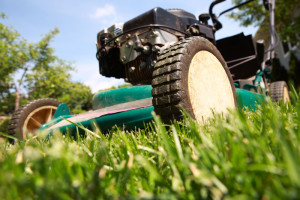 Increasing top soil depth will decrease the maintenance needs of your yard. Deeper top soil allows the roots to grow deeper and thus will make your yard considerably more drought resistant. The deeper soil area also will hold more moisture and nutrients for your sod.
Increasing top soil depth will decrease the maintenance needs of your yard. Deeper top soil allows the roots to grow deeper and thus will make your yard considerably more drought resistant. The deeper soil area also will hold more moisture and nutrients for your sod.
To keep your sod green and lush it will require regular feedings. Generally three applications of fertilizer per year will accomplish this goal. In the spring use a fertilizer that is high in nitrogen (first of the three numbers), a balanced mixture is good for mid summer and fall (all three numbers of the analysis are equal). It is also recommended to leave clippings as they provide nutrients back into the soil.
After sod is established and roots take place waterings should become less frequent and longer. A general rule is 1″ of water per week, which lends itself to a 1/2″ of water put on every 3 to 4 days. During times when ample natural water is occurring it is recommended to leave sprinklers off to save water and not run nutrients past the root zone in the soil.
Keeping your lawn thick and healthy will decrease the need for weed control. Weeds tend to take over in weak or open soil. So,the thicker the grass the less weed problems. New sod is usually ready for mowing within 2 weeks. Be sure that the ground is firm enough to hold feet and mower wheels for this mowing. A general rule is to never cut more than 1/3 of the existing plant off at any one cutting. Allowing grass to grow a little taller during the summer months will help save water as the taller dense grass can better shade itself. In late fall the grass should be mowed lower to prevent problems like snow mold over the winter. Likewise in the spring grass can be cut a little lower and raked to help sunlight get down to warm the soil and start growth.
Please Contact Us if we can assist with any other questions or situations not covered.